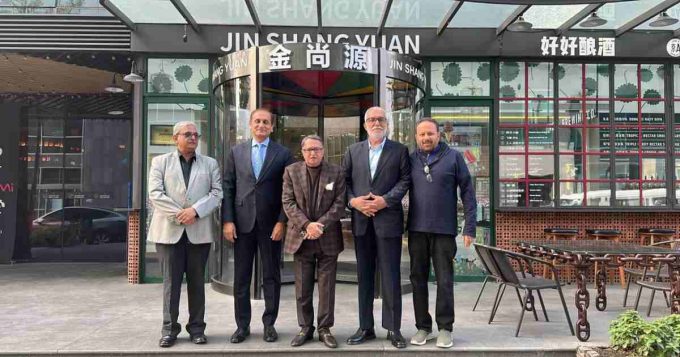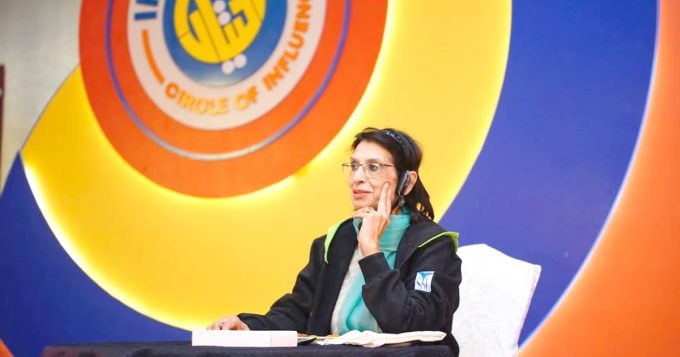Synergyzer Exclusive Interview with Osamah Nasir
From sizzling seekh kababs to 8,000-rupee croissants, Osamah Nasir has tasted it all. The content creator and food reviewer opens up about Karachi’s unmatched food scene, the highs and hazards of street food, and how digital trends and ulcers are shaping his culinary journey.
Synergyzer: Could you describe the culinary experience in Karachi and what sets it apart from other cities in Pakistan?
Osamah Nasir: Karachi offers food around the clock. Whether it’s 11 AM or 10 PM, you always have options. This availability enhances the overall experience.
Economically, Karachi caters to all budgets, from high-end burgers to affordable bun kebabs, ensuring everyone can enjoy its culinary delights. The city’s food streets offer diverse choices, including kebabs, dahi baray, samosas, and pakoras, all with a generous use of spices.
Recently, new stalls featuring vegetarian cuisine have added to this diversity. Karachi has so much to offer that you can discover something new every day, a claim not many other Pakistani cities can make.
Synergyzer: How do you approach experiencing and critiquing food from different cultural backgrounds?
Osamah Nasir: When it comes to critiquing food from outside Karachi, I delve deeply into understanding the cuisine and its history, which allows me to appreciate what’s on my plate.
The challenge is that you can’t always be aware of someone’s cuisine if you haven’t tried it before, so you don’t know what’s good or not. When trying something for the first time, you can’t fully judge it.
I always review with an open mind and respect for the cultural context. For example, I once tried octopus with rice in Portugal. I’d never had octopus before and found it rubbery and chewy, but the dish was made with such love and appreciation that I enjoyed it. This approach allows one to be open to all cuisines without immediate judgment.
Synergyzer: How do you manage to stay healthy while exploring and trying out different foods, especially considering the diverse range of cuisines you encounter?
Osamah Nasir: When I’m eating out for work, I don’t eat the whole dish. It’s impossible to eat so much every day and maintain my current shape. People should know that what I eat on camera is all I eat.
If I’m out with friends, I eat more, but for work, I only taste enough to know if the dish is good. It’s important to understand that some things happen off-camera. At home, I maintain a healthy diet.
I avoid junk food because even small bites outside add up. My diet includes fibre-rich foods. I start my day with coconut water, then have Weetabix, a peanut butter sandwich, and two cups of coffee.
Exercising three to four times a day, in short, 10–15-minute sessions, doing quick walks, sit-ups, or push-ups. Drinking 8-10 glasses of water daily and avoid processed foods and sugar. This routine helps me stay healthy while exploring various foods.
View this post on Instagram
Synergyzer: Since you mentioned your health issue on Instagram, would you feel comfortable sharing what happened?
Osamah Nasir: I believe this incident occurred while I was exploring street food. As I mentioned earlier, I always taste the food myself; I can’t recommend it if I haven’t tried it.
There was a place selling Chole and Lassi, but it was unhygienic with flies buzzing around. Despite the condition, I decided to try it, thinking it couldn’t be that bad. Unfortunately, shortly after, I started experiencing stomach discomfort and fatigue.
Over the following months, I struggled with recurrent illness, thinking it was due to my frequent eating out. It wasn’t until I noticed more serious symptoms, including blood in my stool, that I sought medical attention.
Tests revealed severe ulcers caused by infections, amoebiasis and H. pylori. Treatment involved multiple rounds of antibiotics and probiotics, spanning six months. I had to adopt a strict diet and avoid risky foods.
This experience taught me the importance of health and led me to diversify my interests in content beyond food, focusing more on storytelling, which has been well-received.
Synergyzer: What are the latest trends in digital advertising, social media ads, influencer partnerships, and online content creation adopted by Pakistani food brands?
Osamah Nasir: In Pakistan, we don’t blindly follow trends. We prefer to see proven success before adopting new ideas. Recently, social media influencers have played a pivotal role. Brands are moving beyond traditional advertising, allowing influencers to create authentic content that builds trust naturally.
This shift has been significant in recent campaigns, where influencers drive footfall, generate excitement, and engage in various promotional activities. There’s a notable change from using celebrities to content creators for projects. Creators offer more flexibility and originality, often at a lower cost than celebrities.
This trend opens up opportunities for creative individuals to collaborate with major brands without needing celebrity status, encouraging a more diverse range of voices in marketing strategies.
Synergyzer: Have you noticed any emerging global food trends during your travels, and do you see them influencing the Pakistani food industry?
Osamah Nasir: A trend emerging now is to offer something unique and distinctive without appearing forced. For instance, during my visit to London, there was a buzz about a café selling a giant croissant priced at around £25, roughly 8,000 to 9,000 rupees per person.
This 1.5-kilogram baked delight became a focal point, drawing long queues despite the café’s ordinary setting. Such innovations allow restaurants to stand out and generate interest, leading to increased sales through cross-promotions like coffee sales, all backed by a commitment to quality.
Synergyzer: Can you tell us about your experiences attending different cultural food events, such as weddings, and how they have enriched your understanding and appreciation of cuisine beyond Karachi?
Osamah Nasir: As a Delhiwala, I have been immersed in Delhi’s specific food culture for a long time. I hadn’t experienced other wedding customs until I attended a Christian wedding at a friend’s church.
It was simple and beautiful, with fewer than a hundred guests, which contrasted with the lavish weddings typical in Pakistan. Seeing weddings from different faiths, like Bohri and Hindu, with their unique traditions and foods, highlighted Karachi’s cultural diversity.
For instance, at Bohri weddings, food is served in a way that minimises waste, while Hindu weddings feature delicious vegetarian dishes. These experiences made me appreciate the beauty of Karachi’s diverse customs, showing that each wedding tradition deserves celebration.

Synergyzer: Share your top five restaurant recommendations in Karachi, and what makes them stand out to you.
Osamah Nasir: My current top pick is “Pomo,” known for its outstanding handmade pasta-s, pizzas, and cheese, making it one of Karachi’s finest dining spots. It’s a hidden gem that deserves more recognition.
For desi cuisine, I recommend “Ghaffar” and “Hassan Zayi Koyla” for seekh kabab, dhaga kabab, and BBQ chicken tikka—both are personal favourites. For dishes like aloo palak, mutton palak, and mutton raan, “Kesar,” located at the Lighthouse, is my go-to place, known for its hygiene standards.
Lastly, for satisfying sweet cravings, Darbare-Shireen in Bahadurabad offers the best kulfi and Ras Malai in town.










